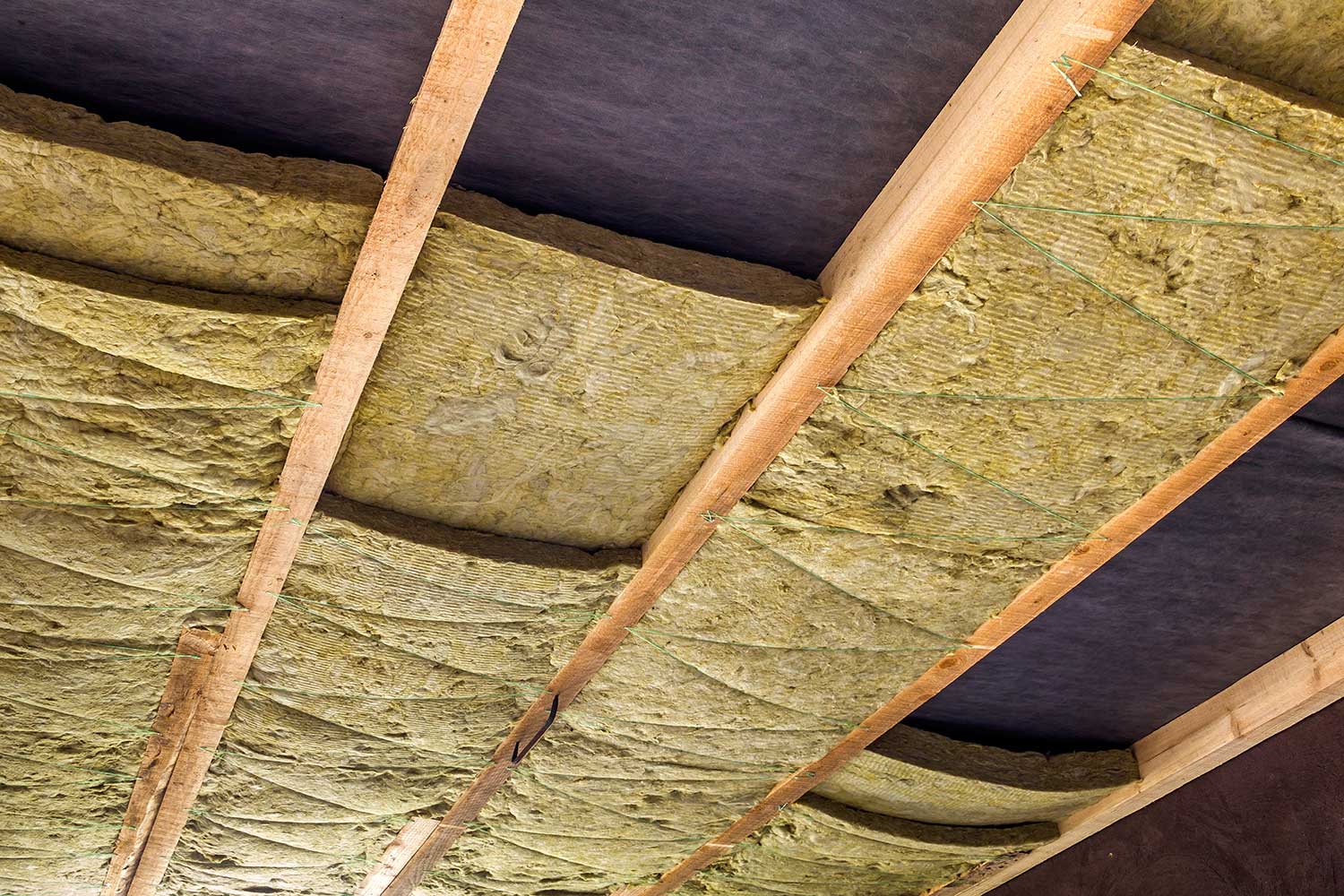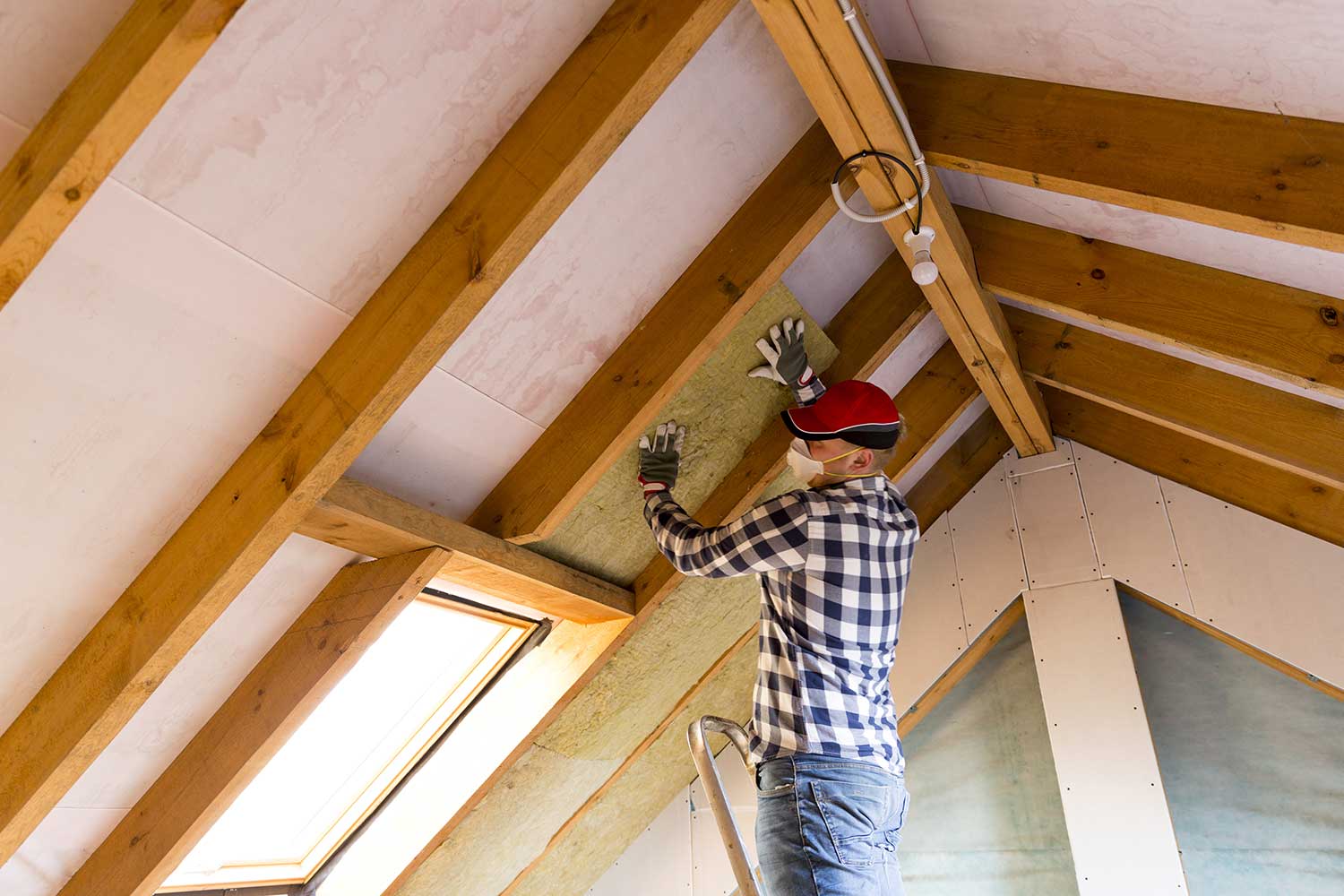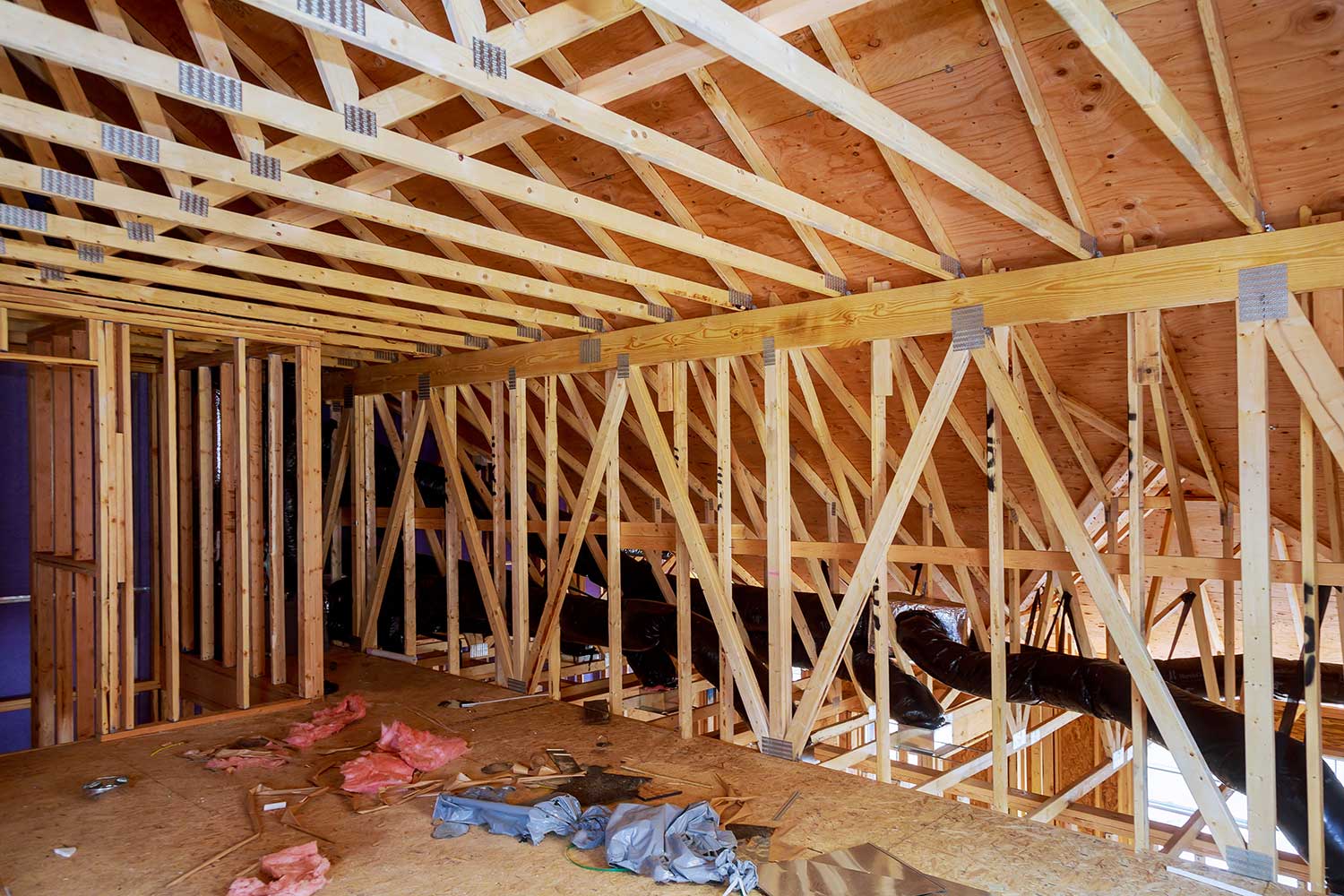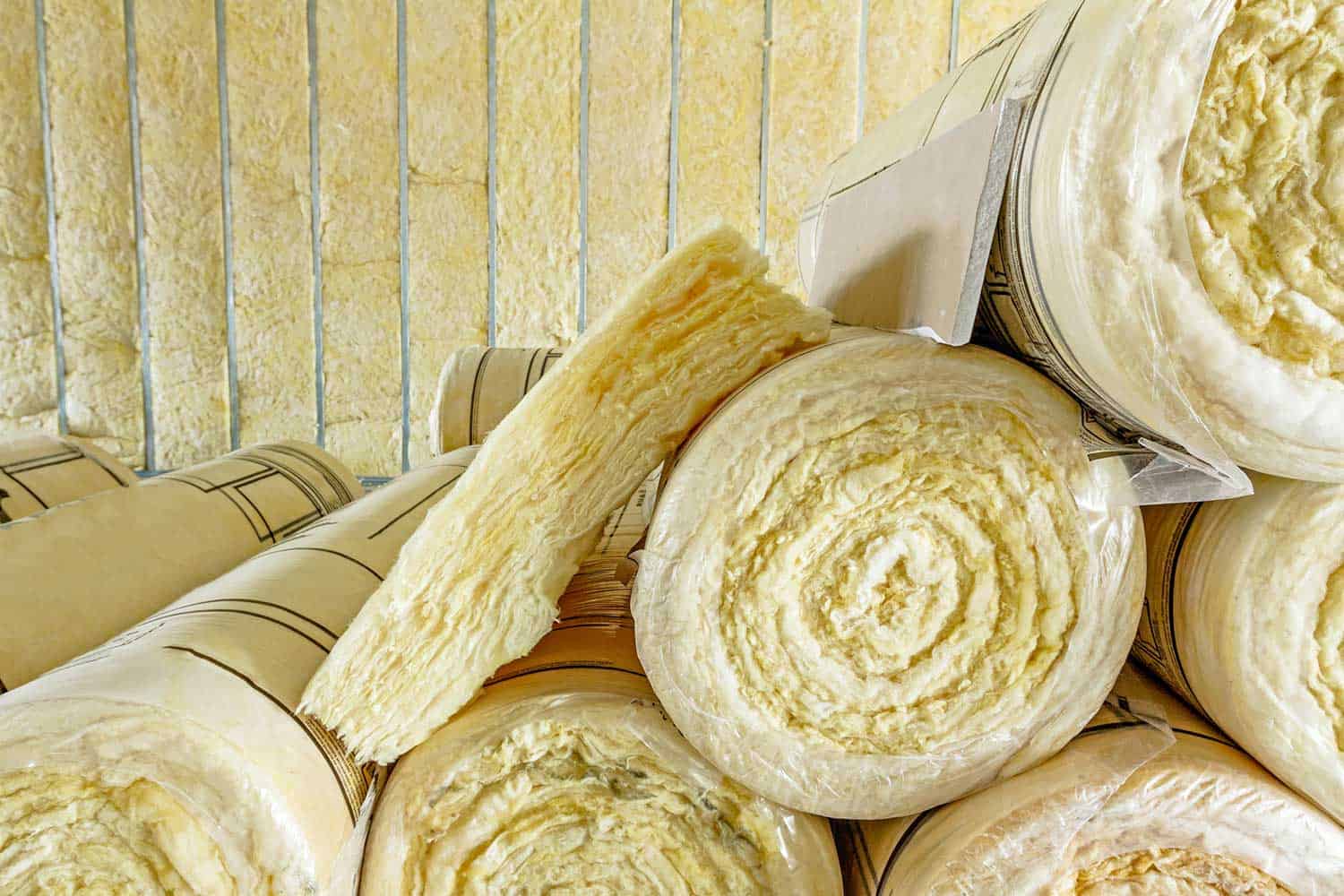To lower costs associated with energy usage as well as provide a good buffer for sound between floors, it's important to insulate your ceilings properly. The most common type of insulation used today is mineral wool insulation. You may be wondering the best way to go about installing it in the ceiling of your home. We have thoroughly researched this topic and have found some answers.
Mineral wool insulation should be installed in a manner that follows your county or city building codes. The best practices for installing insulation in the ceiling are as follows:
- Wear protective gear.
- Measure the space between studs.
- Review your county and city building codes.
- Install the baffles and insulation.
- Cut and fit insulation into place around fixtures and endpoints.
Installing mineral wool insulation correctly may seem like a daunting process, but we'll break down these steps for you and give you helpful tips for the best experience. Keep reading as we discuss the different features of mineral wool insulation and whether you should be using it in your next project.
![A man installing thermal insulation layer under the roof using mineral wool panels, How To Install Mineral Wool Insulation In Ceiling [A Complete Guide]](https://hvacseer.com/wp-content/uploads/2021/12/How-To-Install-Mineral-Wool-Insulation-In-Ceiling-A-Complete-Guide.png)
Can You Install Insulation In The Ceiling By Yourself?
Before beginning any home improvement project, we recommend considering the skills you have, your flexibility in learning new methods, and the difficulty level of the tasks you will need to accomplish to complete your project.

Mineral wool insulation comes in easy-to-install pieces, making it an ideal choice for a beginner. The steps to install mineral wool insulation are not too difficult, but the process does come with safety risks.
Mineral wool is any fibrous material that is made from minerals such as stone, slag, or ceramic. These can and do break off into shards that you should avoid breathing in. Due to its contents, we advise high attention to detail and thorough research before carrying out the installation.
Installing Mineral Wool Insulation In The Ceiling

1. Wear Protective Gear
As you prepare for your insulation project, plan to wear protective gear such as gloves, a face shield or eye protection, and a long sleeve shirt. Jeans or a work suit are also recommended. Many professionals find that the material can irritate the skin and is dangerous if breathed in.
These nitrile work gloves will allow dexterity to handle the insulation while providing adequate protection.
Click here to see them on Amazon.
This face mask will protect your eyes, nose, and mouth from any loose debris. It is important to wear this type of protection at least while cutting through the material.
Click here to see this work mask on Amazon.
For additional protection, consider wearing a respirator mask as well.
Click here to see this respirator mask on Amazon.
This versatile, lightweight suit is disposable and offers affordable head-to-toe protection for any job. It has fitted ankles and wrists to keep out any unwanted material.
Click here to see it on Amazon.
2. Measure The Space Between Studs

To install insulation, your ceiling should still be open to the studs or joists. This means that the lines of wood framing the roof or ceiling that may later be covered with drywall or plaster are still visible.
Mineral wool insulation is usually made in pieces called batts that will squeeze into place between these wooden lines. Measure the space between to get an idea of what size batts to get. The fit needs to be tight enough that the batts will stay in place.
3. Review Your County And City Building Codes
Since there are different climates, there are different requirements that need to be met in a construction project. Contact your city or county or review their websites to see what kind of insulation you are required to use for your project.
Confirm the type of material you can use. Building codes also will give you the minimal amount of space required between the inside of the roof and the insulation.
The codes may also give you a clearance around fixtures that will need to be followed. Usually, a one-inch space is required between the insulation and any ceiling fixtures.
Manufacturers will designate a value for the insulation by giving it what is called an R-value. This value measures its ability to insulate against heat loss.
Lower values are used for inside insulation and flooring. The highest values will be used against the inside of the roof. In most climates, an R-value for an exterior ceiling like that of an attic would need to be at least R-28 or higher.
If your local home improvement store does not sell the value you need you may use two different sizes of insulation that have values that add up to the correct R-value. Having the wrong R-value for your insulation can cause you to fail a building code inspection.
4. Install The Baffles And Insulation
After you have decided on the type of insulation you need and have purchased the correct size, you'll want to decide if you will use baffles. Baffles are pieces of material that are installed before the insulation. They maintain the space between the roof and the start of the insulation.
They provide enough space for air to circulate to improve the life and quality of both your roof and the insulation itself. Consult your local building codes for spacing requirements. Most codes require at least an inch to two inches or more of circulation space.
After installing the baffles, insert the batts of insulation. For exterior ceilings, you can purchase them online or from your local home improvement store. The following video shows how one DIYer installed the baffles and mineral wool insulation in his home:
Click here to see this baffle on Amazon.
For interior ceilings, a lower R-value may be acceptable. This mineral wool comes in boards. Professionals use mineral wool like this one for projects such as recording studios or music rooms.
Click here to see this mineral wool board on Amazon.
5. Cut And Fit Insulation Into Place Around Fixtures And Endpoints
Use a utility knife or serrated knife to cut through the wool. If you do not have an insulation knife, use a common kitchen bread knife. You'll want to cut smaller pieces to go around the fixtures.
Some experts will do the cutting as they come to the fixture. We recommend cutting and fitting these pieces around any fixtures and endpoints after you have put in your main pieces.
Click here to see this insulation knife on Amazon.
What Are The Advantages And Disadvantages Of Mineral Wool?

Mineral wool insulation is a popular choice. It is easy to install, has a high burn point, and is resistant to mold and mildew. It is also a flexible choice, as it has applications that range from industrial to residential. Use mineral wool in exterior walls as well as interior projects.
The main disadvantages of mineral wood for the average homeowner would be the cost and safety concerns. Due to the material and durability, you may pay more than you would for another option. Follow every safety precaution and wear protective gear to lower the risk of complications.
Does Mineral Wool Get Wet?
Mineral wool is naturally resistant to moisture. If it does get wet because it allows vapor to pass through it, the material will return to its original state and effectiveness.
Do You Need A Vapor Barrier With Mineral Wool Insulation?
Another advantage to mineral wool is its dense texture. Since it has a natural resistance to moisture, it does not need added protection. Experts do not usually use a vapor barrier with mineral wool insulation.
Does Mineral Wool Insulation Burn?
Mineral wool can burn if it reaches a high enough temperature, but in the regular household application, it's unlikely to burn due to its high burn point. The material is burn-resistant up to 1,800 degrees Fahrenheit. This makes it a common choice for chimney insulation.
Do Mice Like Mineral Wool Insulation?
Due to its stone content, mineral wool does not actively attract mice. It is harmful to them and other pests due to the ingestion of the sharp shards that make up the material.
Though it can be advertised as being rodent resistant, one study did look at the effect of mice on different types of insulation and found that they all showed deterioration from mice over time.
When Should You Replace Mineral Wool Insulation?

Properly installed and ventilated mineral wool may not need to be replaced in your lifetime. Mineral wool insulation can last up to 80 years.
In Closing
Now that you know how to install mineral wool installation properly and the steps to do it safely, make your plan and complete your project!
Before you go, be sure to check out these other guides:







